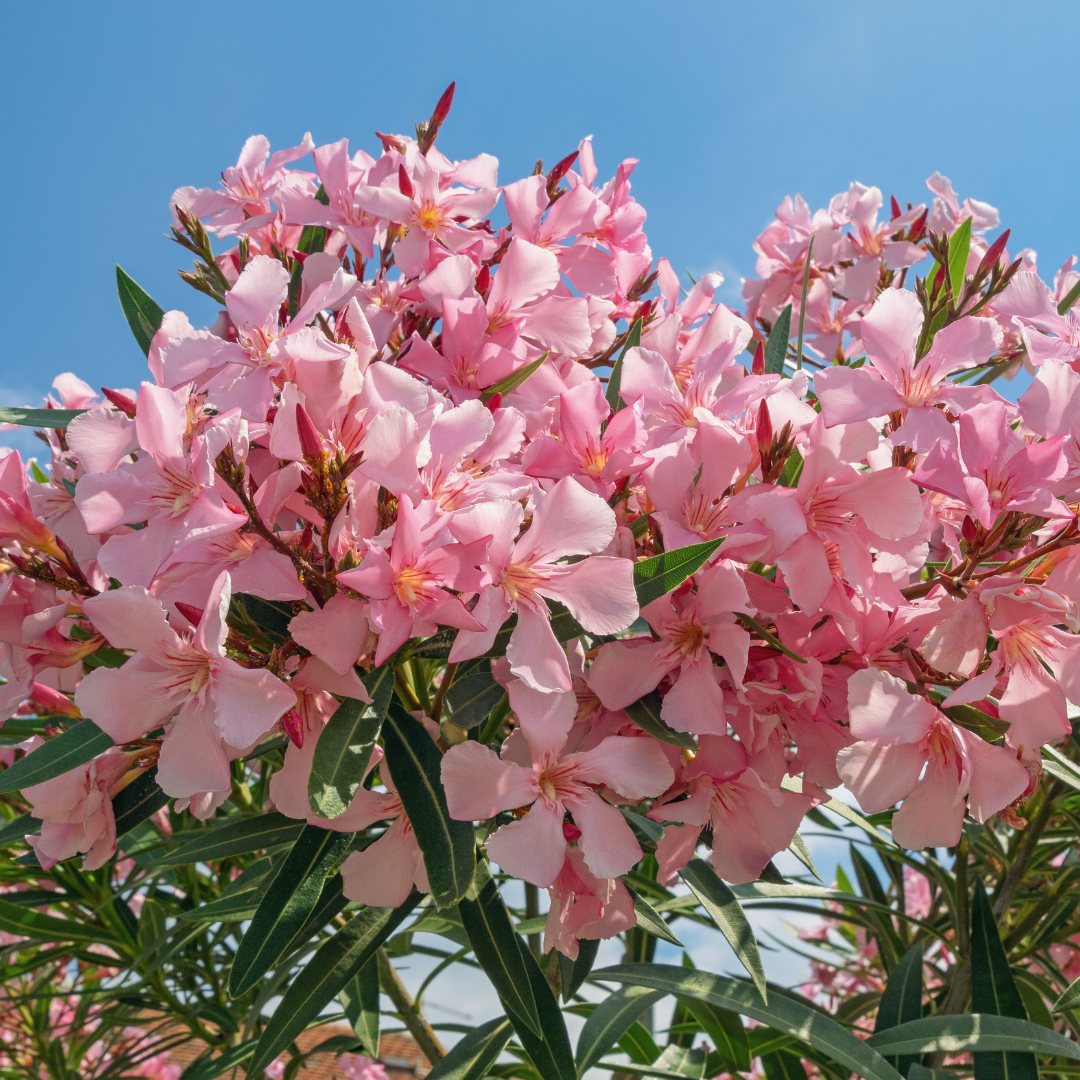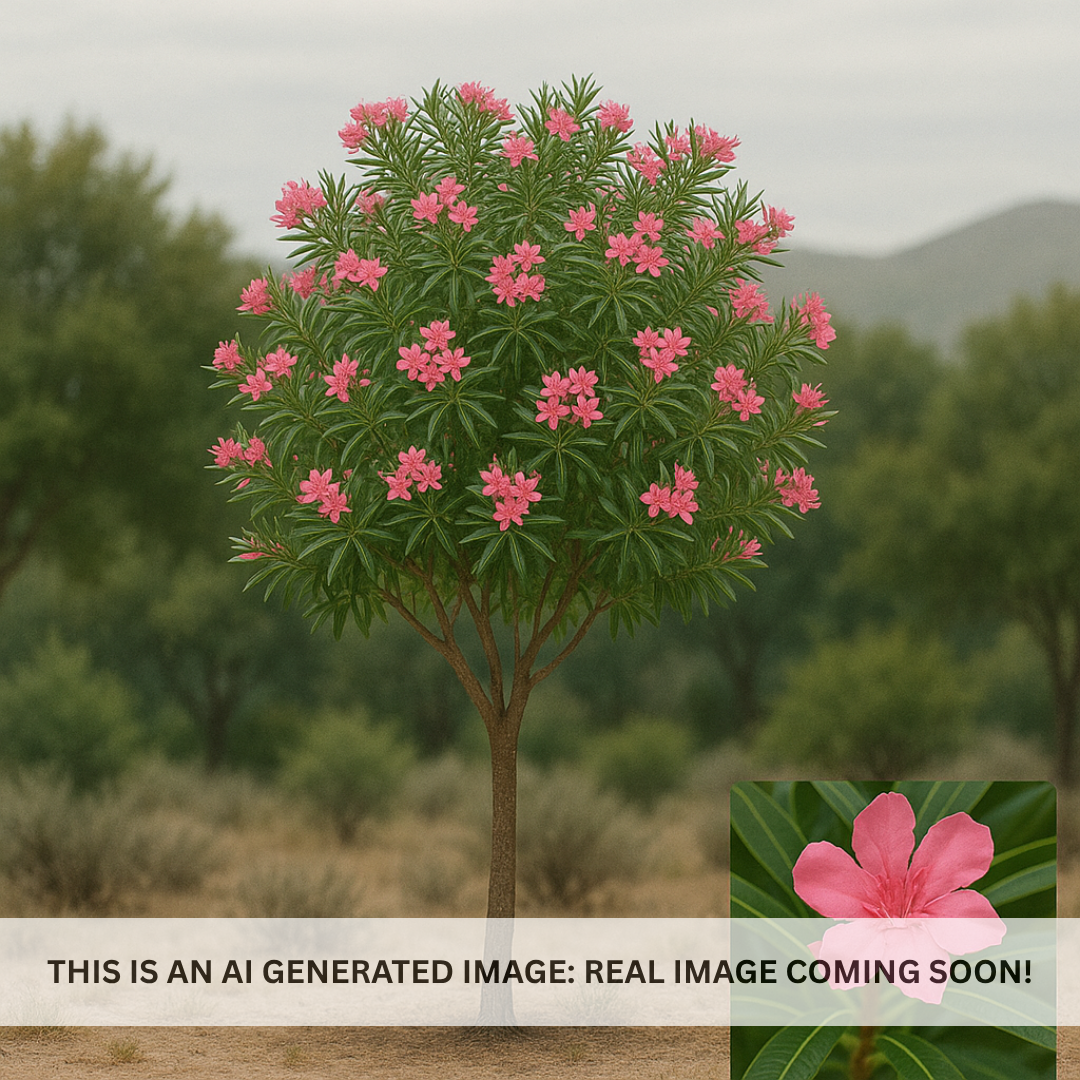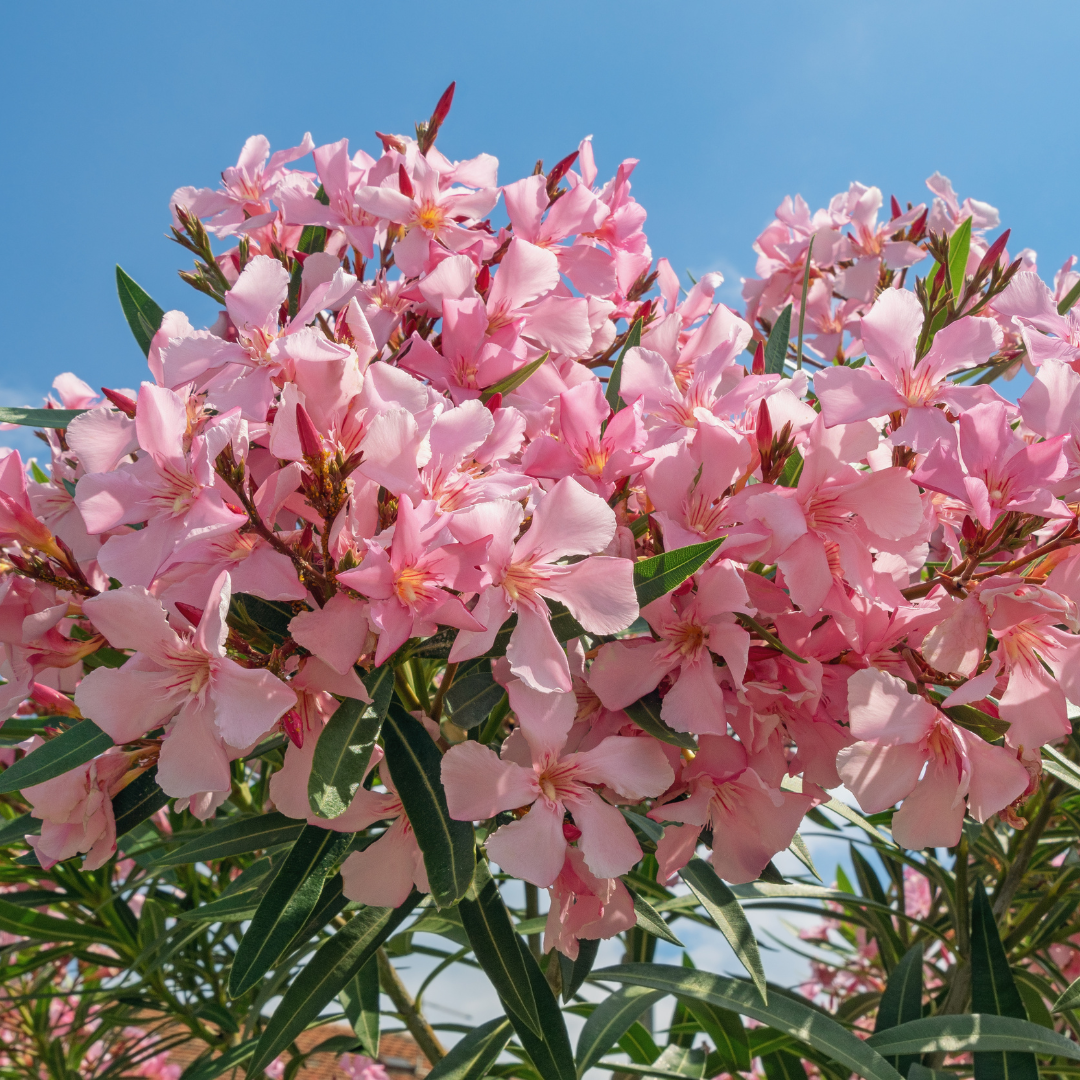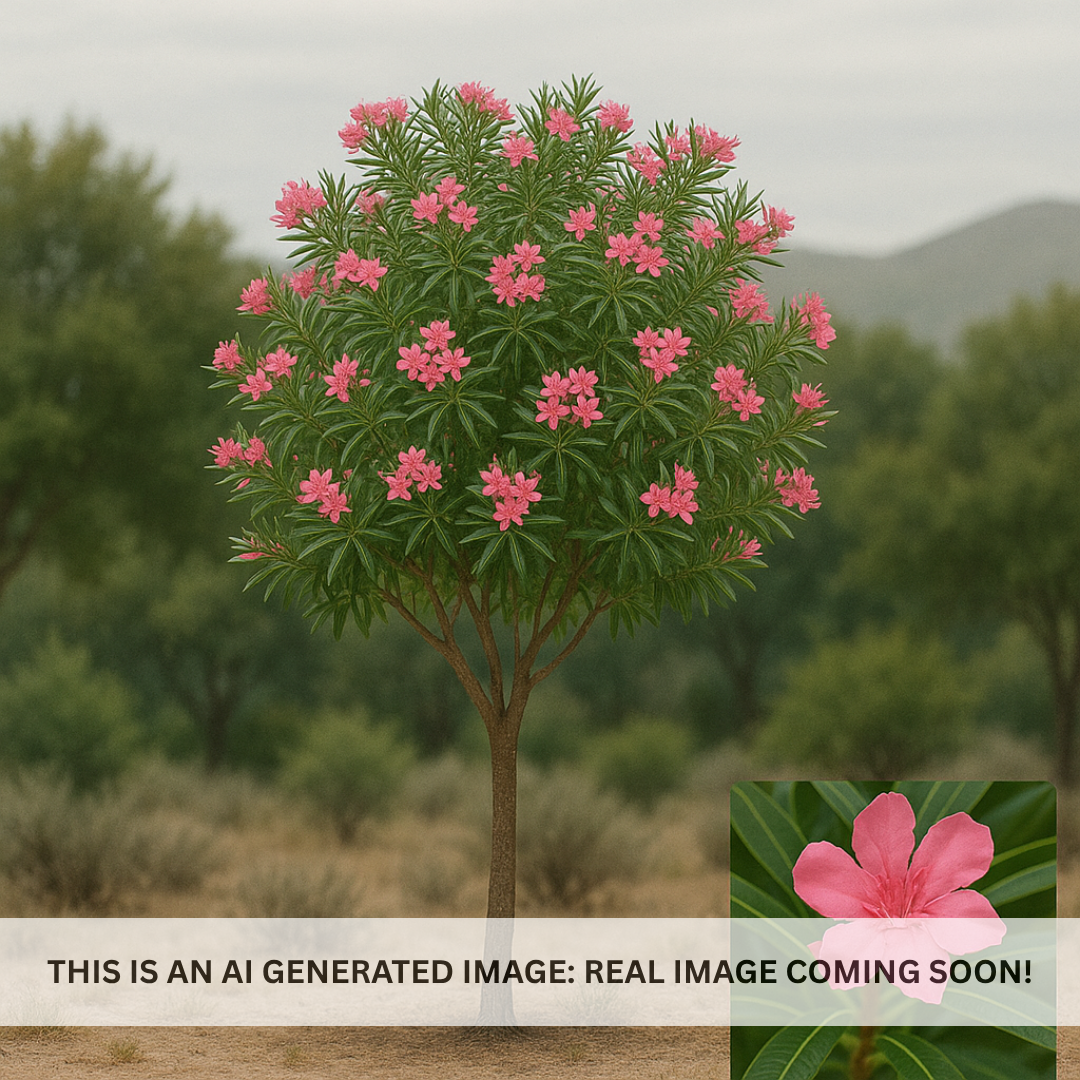My Store
Pink Oleander Tree
Pink Oleander Tree
Couldn't load pickup availability
Plant Type: tree
Plant Height: 8-12 feet
Spread: 6-10 feet
Flower Color: pink
Sun Exposure: Full Sun
Pink Oleander Tree (Nerium oleander 'Pink') – Hardy, Blooming Evergreen for Arizona Landscapes
Add vibrant, long-lasting color and lush greenery to your Phoenix Valley garden with the Pink Oleander Tree, a drought-tolerant evergreen shrub or small tree renowned for its showy pink flowers and resilience in challenging conditions. Scientifically known as Nerium oleander 'Pink,' this Mediterranean native thrives in warm climates, making it an ideal choice for Arizona landscapes seeking beauty and ease of care. With its fragrant blooms, dark green foliage, and robust growth, Pink Oleander is perfect for creating privacy screens, windbreaks, and colorful focal points.
Key Features of Pink Oleander Tree
The Pink Oleander Tree grows to a height of 8 to 12 feet with a spread of 6 to 10 feet, forming a dense, rounded shape. Its narrow, dark green leaves are evergreen, providing year-round structure and color. From spring through fall, this shrub produces clusters of fragrant, trumpet-shaped pink flowers that attract pollinators and add a bold splash of color to the garden. The continuous blooms make it a valuable addition to landscapes seeking long-lasting visual interest.
Adapted to full sun, Pink Oleander thrives in well-draining soil and is notable for its ability to withstand drought, extreme heat, and even salt spray, making it suitable for Arizona’s dry climate. Once established, it requires minimal care, though it benefits from occasional watering during prolonged dry spells and light fertilization in spring for optimal blooming.
A Water-Wise Choice for Phoenix Valley Gardens
Pink Oleander’s drought tolerance and minimal care requirements make it a practical addition to Arizona’s water-conscious gardens. This hardy shrub provides lush greenery and bright flowers without needing frequent watering, supporting sustainable landscaping in Phoenix Valley.
Versatile Uses for Pink Oleander Tree in Phoenix Valley Landscaping
-
Privacy Screens and Hedges: With its dense, bushy growth, Pink Oleander is ideal for creating privacy screens and hedges, providing a colorful and year-round barrier along property lines and garden boundaries.
-
Windbreaks and Roadside Plantings: This shrub’s tolerance for poor soil, heat, and wind makes it well-suited for roadside plantings, public parks, and as a natural windbreak in exposed areas.
-
Focal Points and Ornamental Plantings: The bright pink flowers and lush green foliage make Pink Oleander an attractive standalone specimen, adding vibrant color to garden beds, entryways, and outdoor seating areas.
-
Xeriscaping and Drought-Tolerant Gardens: Pink Oleander’s resilience to drought and minimal water needs make it perfect for xeriscapes and low-water gardens, blending well with other drought-tolerant plants.
Care Tips for Growing Pink Oleander Tree in Phoenix Valley
Plant Pink Oleander in full sun with well-draining soil for optimal growth. During its first growing season, water regularly to establish a strong root system; afterward, it requires minimal supplemental watering. Light pruning after the blooming season can help shape and control growth, especially if used for hedges or screens. Exercise caution when handling the plant, as all parts are toxic if ingested, and its sap may cause skin irritation. With its low maintenance needs, Pink Oleander is a reliable choice for Phoenix Valley gardeners looking for vibrant, drought-tolerant shrubs.
Why Pink Oleander Tree is Perfect for Arizona Landscapes
The Pink Oleander Tree offers Phoenix Valley gardeners a hardy, evergreen shrub that provides year-round greenery and seasonal blooms with minimal care. Its tolerance for drought, poor soil, and intense sunlight makes it suitable for both residential and commercial landscapes. Whether used as a privacy screen, in xeriscapes, or as a showy focal point, Pink Oleander combines beauty and resilience, enhancing Arizona gardens with its bold color and adaptability. For a reliable, low-maintenance shrub that thrives in warm climates, Pink Oleander is an exceptional choice.
Three Timbers Installation Guide (Feel Free to Follow): Pink Oleander Tree
Planting Guide:
- Location: Full sun (at least 6 hours of direct sunlight for optimal growth and flowering)
- Soil: Well-drained, loamy or sandy soil (slightly acidic to neutral soil preferred)
- Spacing: Space trees 10-12 feet apart to allow for optimal growth and air circulation
- Planting Depth: Plant at the same depth as the root ball, ensuring the top of the root ball is level with the surrounding soil surface
- Support: Pink Oleander Tree may need light staking during early growth, but it becomes self-supporting as it matures into a tree with long, graceful branches and colorful flowers
Watering Guide:
Watering After Planting:
- Initial Watering: Water thoroughly immediately after planting to saturate the root ball and surrounding soil
- Frequency: Water every 4-5 days for the first 2-3 weeks to help establish the root system
- Watering Amount: Provide 3-4 inches of water per session for deep watering
When is the Plant Established?
- Timeframe: Pink Oleander Tree is considered established after 6-8 months when the roots have spread into the surrounding soil
Watering Once Established:
- Summer: Water every 7-10 days during the hotter months. If temperatures exceed 100°F, increase watering to every 5-7 days. Provide 3-4 inches of water per session.
- Winter: Water every 3-4 weeks during the cooler months, depending on rainfall.
Drip Irrigation Setup:
- Placement of Emitters: Place the drip emitters 18-24 inches away from the base of the tree for deep watering of the root zone
- Flow Rate: Use emitters with a flow rate of 2-4 gallons per hour
- Number of Emitters: 2-3 emitters per tree for even watering distribution
- Adjusting Frequency: In summer, increase watering frequency to every 5-7 days. In winter, reduce to every 3-4 weeks
Share




